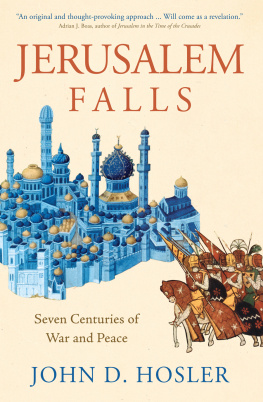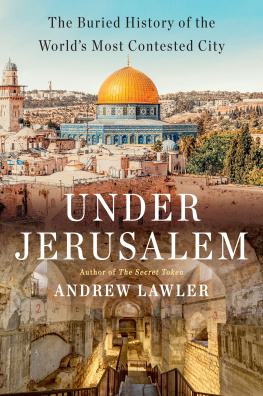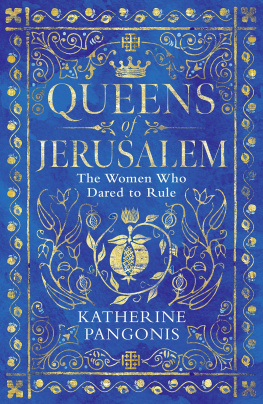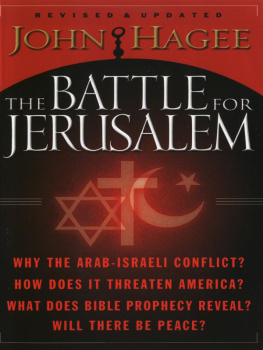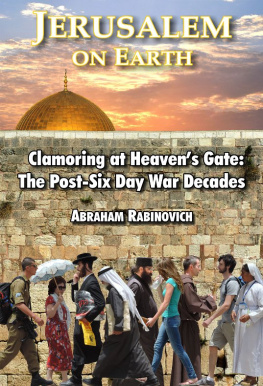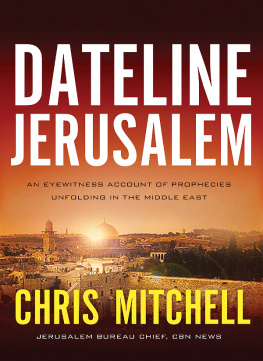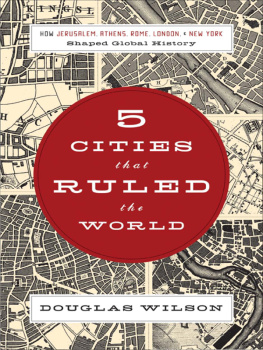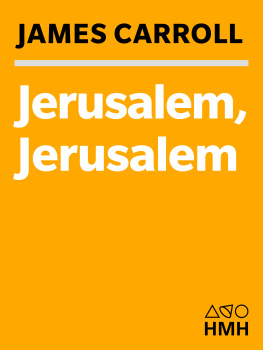JERUSALEM FALLS

Copyright 2022 John D. Hosler
All rights reserved. This book may not be reproduced in whole or in part, in any form (beyond that copying permitted by Sections 107 and 108 of the U.S. Copyright Law and except by reviewers for the public press) without written permission from the publishers.
All reasonable efforts have been made to provide accurate sources for all images that appear in this book. Any discrepancies or omissions will be rectified in future editions.
For information about this and other Yale University Press publications, please contact:
U.S. Office:
Europe Office:
Set in Adobe Caslon Pro by IDSUK (DataConnection) Ltd
Printed in Great Britain by TJ Books, Padstow, Cornwall
Library of Congress Control Number: 2022939275
e-ISBN 978-0-300-26869-0
A catalogue record for this book is available from the British Library.
10 9 8 7 6 5 4 3 2 1
To my parents,
for everything
CONTENTS
ILLUSTRATIONS
Plates
Maps
ACKNOWLEDGMENTS
This is a Covid-Era book. As most scholars will attest, research during a pandemic has been challenging, to say the least, with archives and libraries closed and international travel often impossible. Speaking for myself, I would not have succeeded in this project without the steady support (and editing skills) of my wife, Holly, and the love of my children Gianna, Michael, and Rocco. With the help of numerous resources, including the University of Kansas Watson Library and the Combined Arms Research Library at Fort Leavenworth, I was able to locate materials and meet deadlines despite the worldwide difficulties. I would also like to thank Heather McCallum, Katie Urquhart, and Marika Lysandrou at Yale University Press, as well as my literary agent, John W. Wright, for all their efforts on my behalf.
This book began as a teaching idea. In the spring of 2018, I took over the elective Deep Roots of Conflict in the Middle East, and decided to orient the lessons around competing claims to Jerusalem: Jewish, Christian, and Muslim. It has been an enjoyable and rewarding journey every iteration, and I thank every student who enrolled in that class over the years, as well as those students in my other elective, Warfare in the Age of the Crusades. The environment of the Command and General Staff College has stoked my historical inquisitiveness like no other place Ive worked, and a superb and supportive array of colleagues have contributed intellectually to the development of the present book: David Cotter, Gregory Hospodor, Geoff Babb, Jonathan Abel, William Kautt, John Kuehn, Jeremy Maxwell, Nathan Jennings, David Bornn, Brian Steed, and Benjamin Schneider; a special nod to William Nance and Eloy Martinez, both of whom took the time to sit in on my electives and offer feedback. I also thank my medievalist colleagues far and wide, especially Daniel Franke, Andrew Holt, Matthew Phillips, Laurence Marvin, Jonathan Phillips, John France, Kelly DeVries, Michael Fulton, Thomas Madden, Alfred Andrea, Jessalynn Bird, M. Cecilia Gaposckin, Ilana Krug, Bernard Bachrach, David Bachrach, Mike Livingston, and Wendy Turner.
I have been fortunate to remain in contact with many of the good folks from my days at the University of Delaware, where I received my doctorate in 2005. I thank Christine Heyrman and Gary May for their support of my professional goals, as well as Lawrence Duggan and Michael Frassetto for years of learned personal and professional correspondence. Alexander Pavuk generously reviewed several chapter drafts. And of course, I thank my doctoral adviser, Daniel Callahan, a Jerusalem scholar of the first rank. I hope he is pleased that his former student, who once eschewed the Old City map hanging in his office for Angevin England, has finally turned the other direction: Go East, young man, Go East!

Map 1: The eastern Mediterranean in the Middle Ages

Map 2: Jerusalem in the early Muslim period

Map 3: Battle of Manzikert

Map 4: Jerusalem in the crusader period

Map 5: Jerusalem in the Ayyubid period

Map 6: Course of the First Crusade
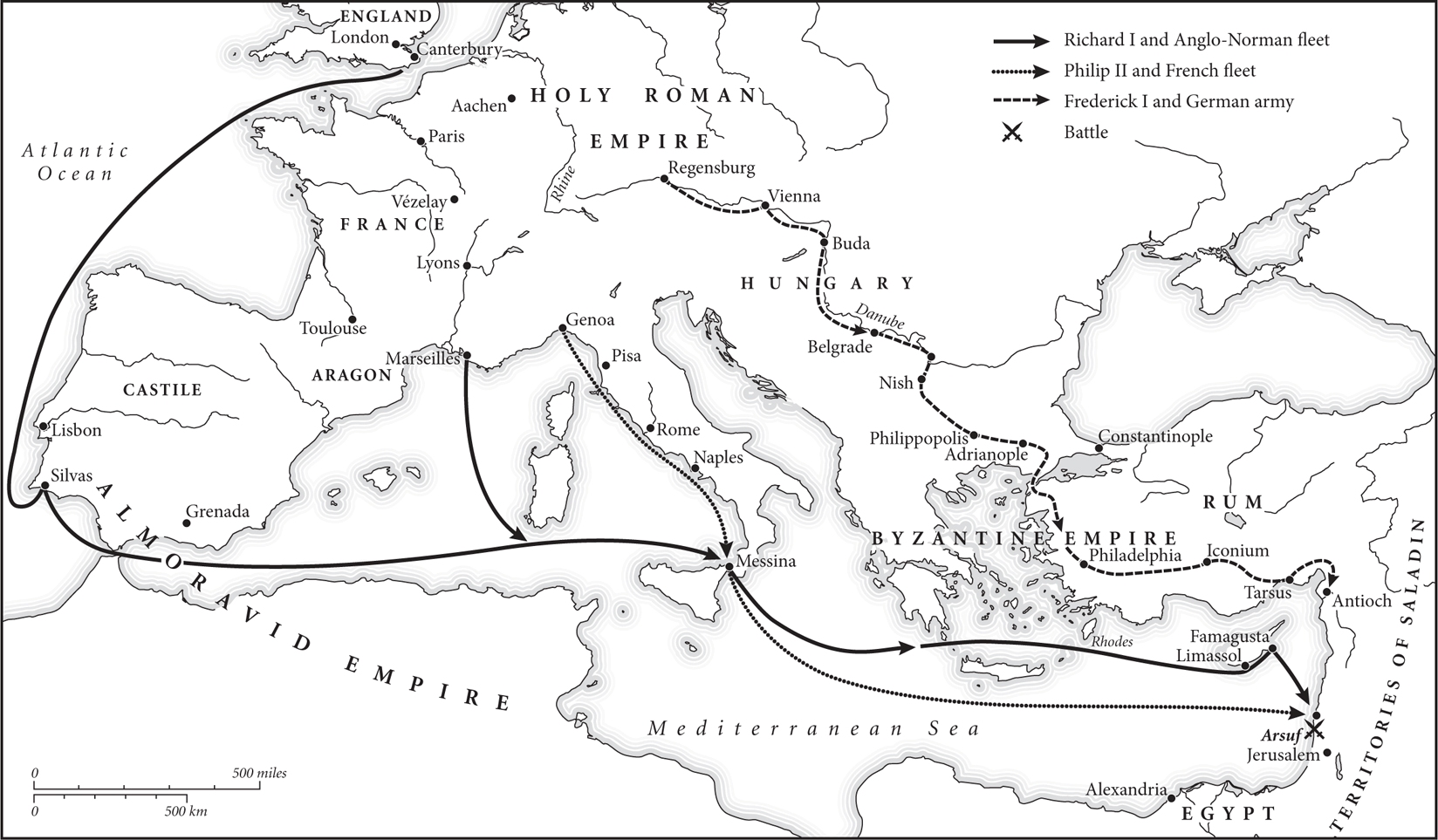
Map 7: Course of the Third Crusade
INTRODUCTION
Open the gates of victory;
I will enter and thank the Lord.
This is the Lords own gate,
where the victors enter. (Psalms 118:1920)
B enjamin passed through the citys strong walls next to the massive Tower of David that stood in perpetual watch over the western gate. He couldnt help noticing the considerable strength of the ancient foundation. Moving further into the streets, he ambled past two hospitals containing knights recovering from battle wounds yet ever ready to wage war even as they reclined. He arrived next at the holy places. First, the Sepulchre, full of pilgrims seeking the way of Christ. Second, the Dome, a handsome cupola. Finally, he reached the Wall that once buttressed the holy Temple and stopped for a while, to whisper a prayer. Thereafter stables, canals, pillars, other tombs, and finally the eastern gates. Traversing the deep valley, he climbed up the mount where the olives grow, from which he saw as far south as beyond the Dead Sea.
Jerusalem: it goes, and has gone, by many names: Salem, Hierosolyma, al-Quds, Bayt al-Maqdis, the Holy City, and the city of peace. The very name of Jerusalem conjures an array of emotions and images, of a distant and almost mythical place steeped in spiritual meaning yet fraught with peril. Ensconced within the walls of the Old City, todays visitors proceed through labyrinthine streets that twist, ascend, and plunge through distinct quarters of densely packed humanityhere under the bright Middle Eastern sun, there in subterranean tunnels. Amid the bustle of the citys everyday life, they might discern a certain gravity, a heaviness that ceaselessly reiterates the seriousness of the place. Prized continuity in this holiest of the earths cities has routinely been dashed by epochal change. Few locales have been attacked as often and as savagely as Jerusalem, and even in times of peace sectarian strife can turn the citys inhabitants against their neighbors in a moment. This is a book about that seemingly eternal history of glorious and destructive deeds, and the memories that continue to resonate in Jerusalems streets and in halls of government and houses of worship throughout the world.
With Jerusalems extensive history stretching through thousands of years, we must pick our steps deliberately if we are to extract meaning from such a massive data set. Accordingly, this book is not a comprehensive history of the city of Jerusalem; that would be a burden very few writers could shoulder with competence. Neither is it a history of medieval Jerusalemmuch less the medieval Levantin all its various aspects; that, too, would be a heavy task. Rather, it is a book about conquest: those falls, or moments from the seventh through the thirteenth century when possession of the city passed from adherents of one religious confession to another by way of conflict. This book posits that the Holy Citys medieval story is highly pertinent to its modern controversies. Although it is common to attribute to the medieval period only a generalized tale of religious strife, these falls can serve as prisms into an alternate, and rather surprising, narrative: the story of concord and resolution.
Next page
